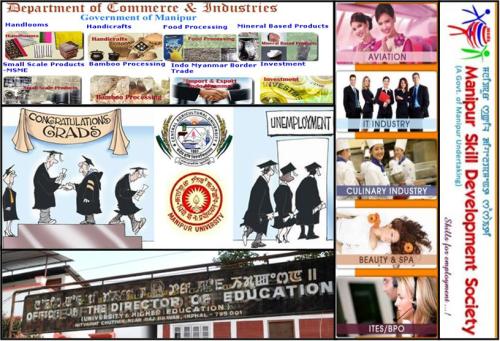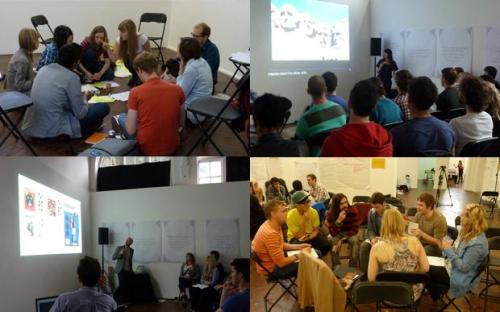 Starting from the basic principle is always sensible for any strategic planning process, as it helps to come up with directional guidance on how to approach issues when there’s chaotic abundance of info and wish lists to action on. What does it mean when we say the term ‘Smart City’? Before trying to find answers, it’s recommended to ask further follow-on questions to seek clarity on the topic; such as ‘whose the Smart City is for?’, ‘how much budget is for and given by whom to be spent by when?’, ‘Is the scope of the project only on infrastructure development, or extend to realignment of public/private administrative support services?’, ‘Is the focus of overall exercise only on new constructions to offer new services, or extends to restructuring of available resources for cost saving and effectiveness?’, ‘what priority problems and wish lists are to be addressed within the scope as compared to aiming for everything?’. Collating a list of such strategic questions ought to be the first step to define scope for ‘Smart City’ project and then creating a table of checklist to guide the overall activities of finding appropriate operationally implementable solutions. If we imagine nothing exist in the first place, we can see ‘people’ and ‘means of transport’ as the base ingredients in any geographical location. In short, ‘Smart City’ project maybe considered as means to facilitate the flow of people and vehicles in the city.
Starting from the basic principle is always sensible for any strategic planning process, as it helps to come up with directional guidance on how to approach issues when there’s chaotic abundance of info and wish lists to action on. What does it mean when we say the term ‘Smart City’? Before trying to find answers, it’s recommended to ask further follow-on questions to seek clarity on the topic; such as ‘whose the Smart City is for?’, ‘how much budget is for and given by whom to be spent by when?’, ‘Is the scope of the project only on infrastructure development, or extend to realignment of public/private administrative support services?’, ‘Is the focus of overall exercise only on new constructions to offer new services, or extends to restructuring of available resources for cost saving and effectiveness?’, ‘what priority problems and wish lists are to be addressed within the scope as compared to aiming for everything?’. Collating a list of such strategic questions ought to be the first step to define scope for ‘Smart City’ project and then creating a table of checklist to guide the overall activities of finding appropriate operationally implementable solutions. If we imagine nothing exist in the first place, we can see ‘people’ and ‘means of transport’ as the base ingredients in any geographical location. In short, ‘Smart City’ project maybe considered as means to facilitate the flow of people and vehicles in the city.
From the infrastructural and people’s commuting aspect, ‘Imphal Municipal Region (IMR)’ is the only city zone in the entire Manipur state wherein the majority of travel and resource utilization seem to be occurring. So, it may make sense to aim to transform IMR into a smart city, by considering how people from other towns/villages commute/correlate to IMR for their ease of access and convenience. Public Transport System (PTS) ought to be the first priority theme in this smart city project in two levels of focus – (1) for within the city commuting, (2) for connectivity to other connected towns/villages. Through this ‘Smart City project for Imphal’, we can also enable growth and development opportunities in other towns/villages; thereby delivering a better ‘value of money’ impact. PTS may be considered as the motherboard wherein all the other projects are plugged into making the entire device-setup alive and functioning appropriately. Accordingly, allocation of fund in the ‘Imphal Smart City’ project budget ought to be ‘60% to PTS and 40% to individual mini-projects’ as a rule of thumb.
After having conducted a population count in each zone within the Imphal Municipal area and also devising a simulated commuting model for a weekly-slot throughout a year cycle, we can come up with a reasonable understanding of how the Imphal city is functioning on a holistic view. We can identify what private / public service facility already exists at which spot on the map of Imphal city; such as hospitals, schools/colleges, Govt offices, police stations, fire services, markets, airport, upcoming train station, courts, public venues. State government ought to form a company or corporation to operate a public transport service meant ‘for within the IMR’. This initiative will enable (1) reduction in use of small private vehicles within the city limits, (2) reduction in pollution and noise limits, (3) ease of access to every corners of the city and 24×7 means of travel within the city limits through PTS. Feasibility study of how the ‘commuting model’ may look like for ‘within the city’ may be conducted by hiring specialist town planners and also referring to other small and large cities in the world. Due-attention to the nature of commercial transport services within the PTS needs to be understood too; such as routes of goods carrying trucks, crossover on the ‘transport services to carry goods’ meant for the purpose of large-scale business and individual family usages.
Progress of a city will be known ‘not by the number of private vehicles run by individuals in the city, but by the number of individuals using public transport services’. After having evaluated on the simulated commuting computer model, road networks within the Imphal city need to be reorganized; such as – (1) effective usage of ‘semi-low-floor’ buses funded earlier under JnNURN fund from central Govt, (2) effective traffic flow routes for various types of vehicles within the City, with priority focus to emergency services and ‘individual shoppers and sellers at Imphal markets’, (3) congestion/emission charge levied to private vehicles within the Imphal market areas, (4) 24×7 transport facilities to every spots within the city map and thereby creating appropriate traffic control-light systems, bus stands and terminals, solar-powered lighting on public roads, emergency phone-booth and medical care spots on the routes, waste disposal bins and toilets on the routes, (5) mandatory process in place to plan any route diversion / roadblocks prior to any upcoming Govt/public events or after any sudden accidents/constructions on the route, and thereby appropriate advertisement of roadblocks (on social media, newspapers, city-travel apps).
To be precise, Imphal City is more important to ‘people living in other villages/towns’ of Manipur than those living within the Imphal Municipal Region (IMR); and the main reason being non-availability / defunct nature of modern means of livelihood elsewhere within Manipur State. Many individuals from other towns/villages commute to IMR for accessing almost every aspect of modern means of livelihood (e.g. hospitals, schools/college, Govt offices, and markets). On the ‘Smart City project for Imphal’, the planners ought to consider how best can the drop-in and drop-out points wherein ‘people, vehicles and access demand for modern livelihood services from other villages/towns connected to IMR’ can be addressed effectively. Priority focus of state Govt needs to be more on improving road infrastructure in other village/towns, so that people can at least commute to IMR daily. State Govt ought to create another dedicated company or corporation to deal with transport services ‘in and out of Imphal city’; since purpose and needs of such transport services are distinctively different from that of ‘within Imphal city’ focus. Private parties (i.e. owners and associations of buses, taxis, auto rickshaw) must be partnered for delivery of this portion of public transport system on a 24×7 basis, since state Govt may not have sufficient manpower and financial resources to provide transport services to the last-mile connectivity concept (outside the IMR limits).
Making the best appropriate usage of available fund in the most simplified approach for larger benefit of people in Manipur is the most reasonable idea on ‘Imphal Smart City’ project. Also, how other funding schemes (of state and central governments) can be channelized to this project can be evaluated. Just trying to copy solutions used in other cities of the world (on this concept of ‘smart city’) will make less sense for us, unless we start to focus first on the basic needs for our local scenarios first. The demography and income/knowledge level of people living in Manipur is different from other cities of the world, and we have our own ways of living and making a living. We should aim to avoid new failure cases of various large scale infrastructural projects in Manipur state (e.g. similar to ‘Flyover construction at Imphal City’). Before reinventing new wheels, let’s check what/how we can make use of the available resources in a more effective and efficient ways. Also, let’s aim first to invest the new fund for smart city project to streamline the already available service delivery systems, and then, let’s recreate something totally new, only in case of a genuine need to overhaul the system/structure portion on its entirety. Thus, let’s think of the people first and make the city, rather than aiming to create the city first and fit the people later.
About the Author:
Shanjoy Mairembam (BEng, MBA, LLM) is a Business Strategy Consultant based at Leicester (UK). He supports mentoring of young entrepreneurs in ‘conceptualization of ideas into business case’, and offers role of a ‘Business Doctor’ to local NGOs/SMEs in Manipur.
For further info, visit http://www.shanmaiconsulting.com; E-mail: shanjoym (at) gmail (dot) com










